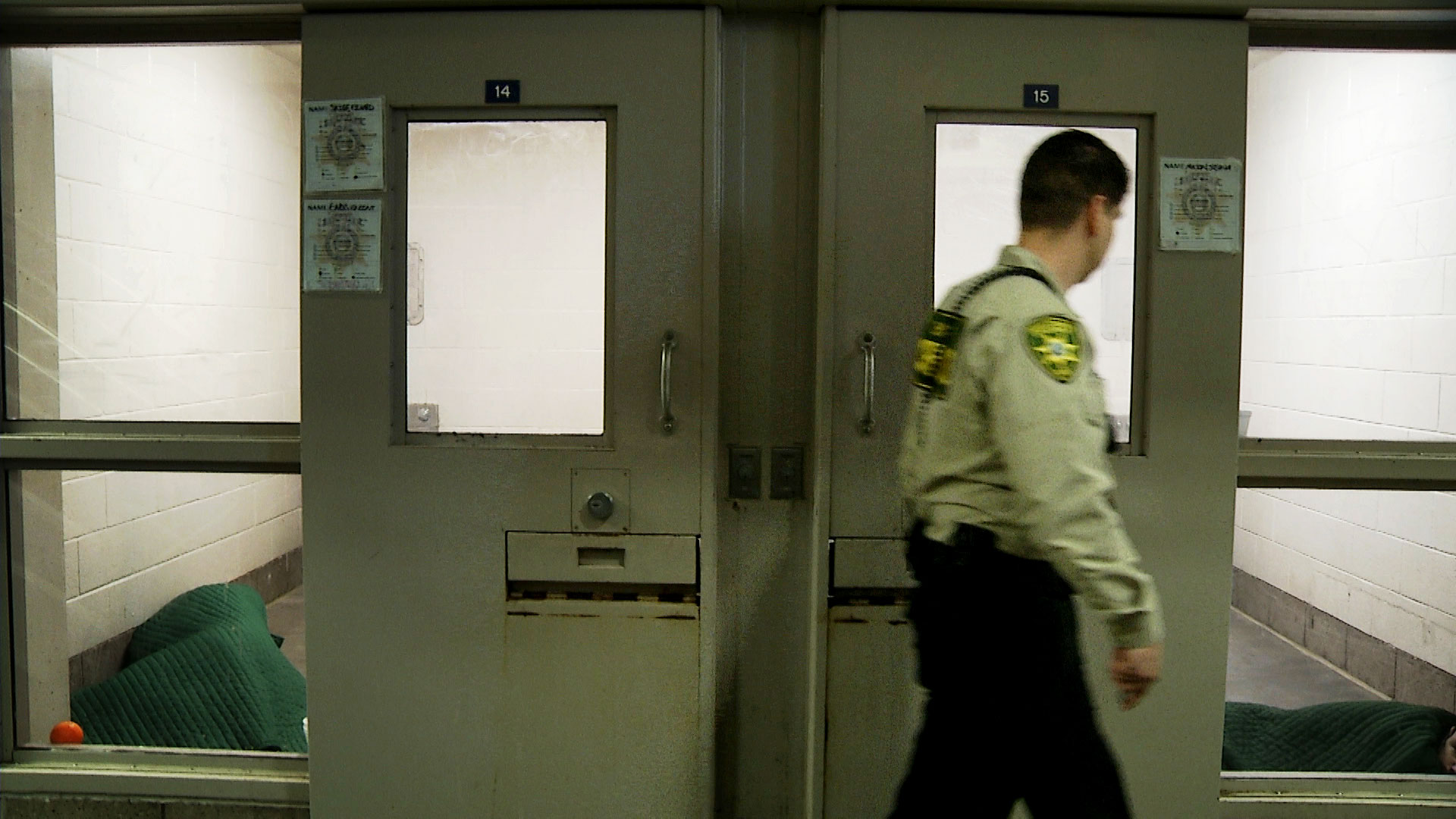 A Pima County correctional officer glances inside a cell at the county jail.
A Pima County correctional officer glances inside a cell at the county jail.
With two days to go before a county commission releases its first report on whether Pima County should build a new jail, a coalition of Tucson activists has produced a report of its own with a resounding message.
The 43-page report, delivered to the Board of Supervisors meeting Dec. 19 by the No New Jail Coalition, relies on previous reporting that the Pima County Jail is one of the deadliest jails in the country in its argument to the Board to deny any upcoming proposal from the Blue Ribbon Commission.
“Attempting to incarcerate away dire realities-a critical shortage of affordable housing, a serious lack of accessible mental health care, cycles of addiction and poverty- has never worked and has, in fact, only worsened the situation,” it reads.
The document aggregates information on the current state of the jail and outlines alternatives to incarceration.
The county chartered the Blue Ribbon Commission earlier this year to scope the issues currently facing the Pima County Jail. Although their final recommendations aren’t expected until early next year, earlier projections estimate a new jail could cost $400 million and expand capacity by 30%.
The report also points to multiple times Pima County Sheriff Chris Nanos has said the current facility is not equipped to deal with the substance abuse and mental health issues facing the population.
At the opening of the Pima County Transitions Center Sept. 7, Nanos said the jail “shouldn't be expected to handle every problem society has.”
The sheriff says this is why a new jail is needed, but Liz Casey, a social worker who presented the No New Jail Coalition report, disagrees.
“We’re not debating what type of structure is necessary to hold more people in our community. The only evidence-based models for those issues and these public health crisis are housing and services,” she said.
Activists are calling for expansion of community programs like Tucson’s Housing First Model, overdose prevention sites, and ending cash bail instead.
“Overcrowding at the jail, insufficient staff at the jail, and ongoing deaths of people in custody of the jail are all made worse by inappropriate and unconstitutional imposition of excessive bail for those who cannot pay, but are not a danger to the community,” said Sandy Davenport of Tucson’s NAACP.
The report is also a memorial, with obituaries from ten of the 32 individuals who have died in the jail in the last two years, or shortly after release.
The Commission is scheduled to release its initial findings report on their last 9 months of work on Thursday, Dec. 21. A public survey will open a few days later on Dec. 26th, the answers of which have the potential to influence the commissioner’s final recommendation in February.
When No Jail Death's final report is available, it will be posted at this link.

By submitting your comments, you hereby give AZPM the right to post your comments and potentially use them in any other form of media operated by this institution.